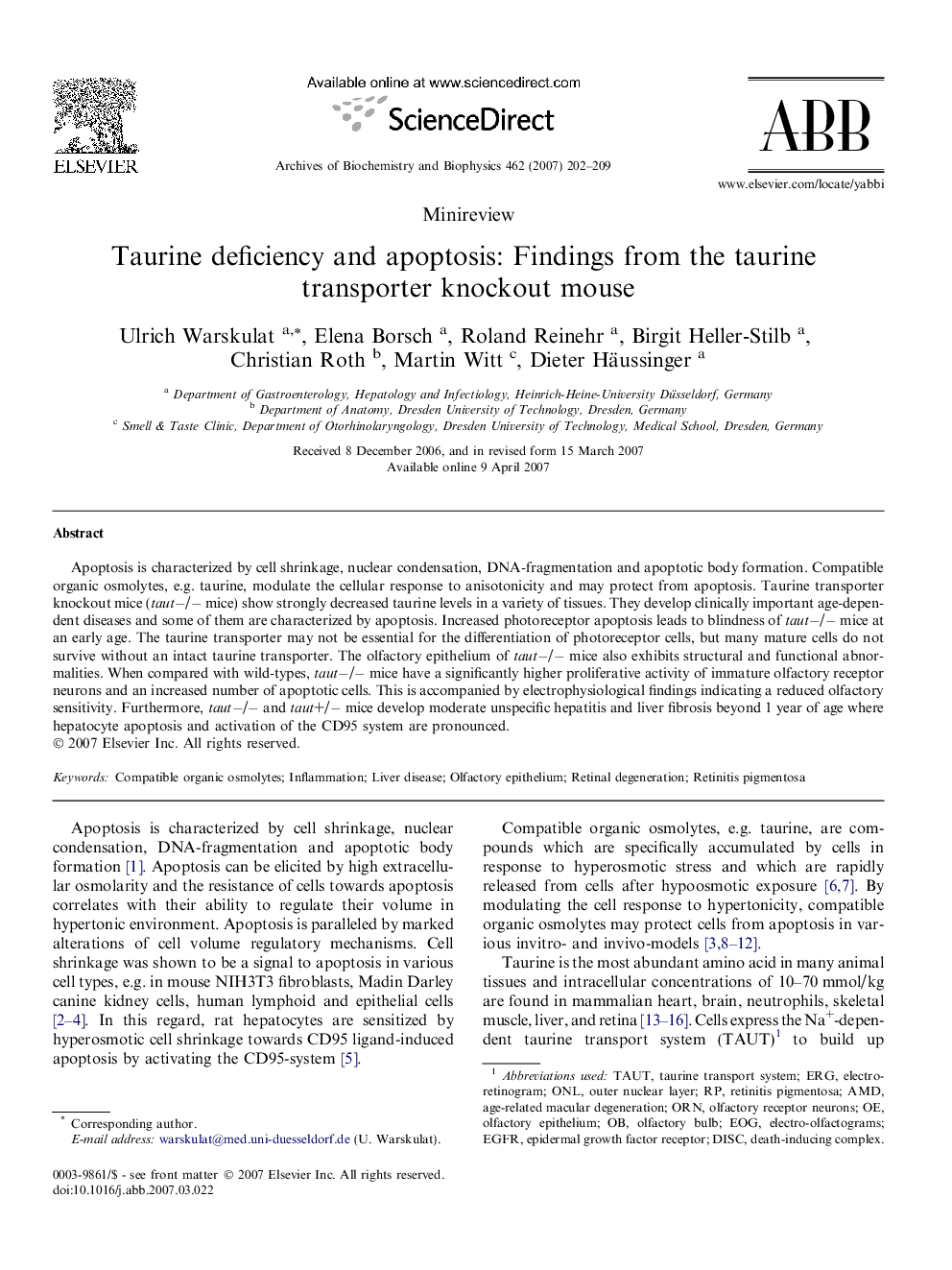| Article ID | Journal | Published Year | Pages | File Type |
|---|---|---|---|---|
| 1927003 | Archives of Biochemistry and Biophysics | 2007 | 8 Pages |
Apoptosis is characterized by cell shrinkage, nuclear condensation, DNA-fragmentation and apoptotic body formation. Compatible organic osmolytes, e.g. taurine, modulate the cellular response to anisotonicity and may protect from apoptosis. Taurine transporter knockout mice (taut−/− mice) show strongly decreased taurine levels in a variety of tissues. They develop clinically important age-dependent diseases and some of them are characterized by apoptosis. Increased photoreceptor apoptosis leads to blindness of taut−/− mice at an early age. The taurine transporter may not be essential for the differentiation of photoreceptor cells, but many mature cells do not survive without an intact taurine transporter. The olfactory epithelium of taut−/− mice also exhibits structural and functional abnormalities. When compared with wild-types, taut−/− mice have a significantly higher proliferative activity of immature olfactory receptor neurons and an increased number of apoptotic cells. This is accompanied by electrophysiological findings indicating a reduced olfactory sensitivity. Furthermore, taut−/− and taut+/− mice develop moderate unspecific hepatitis and liver fibrosis beyond 1 year of age where hepatocyte apoptosis and activation of the CD95 system are pronounced.
